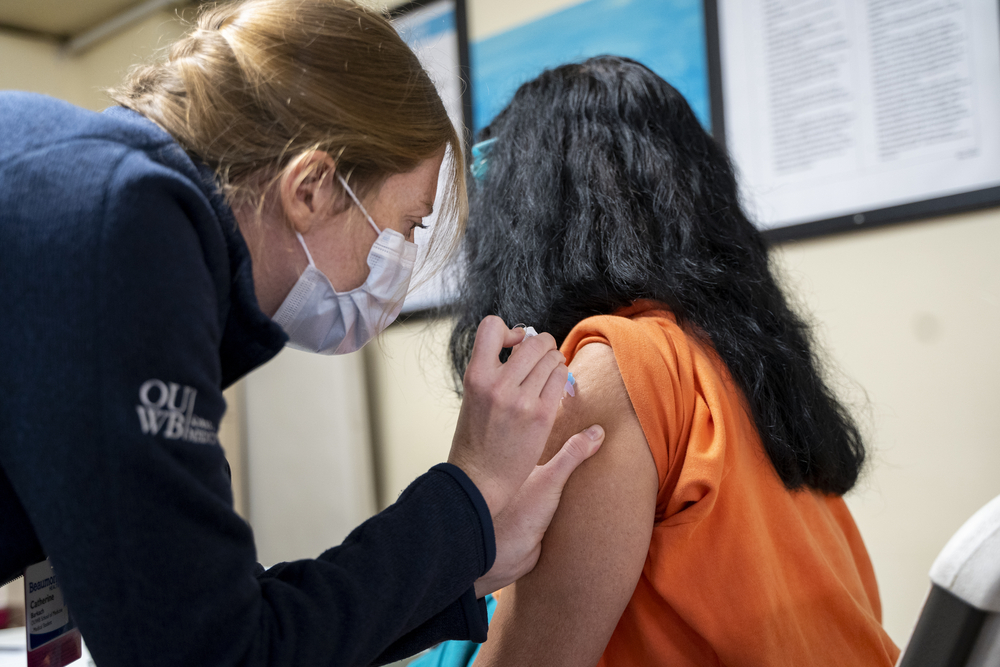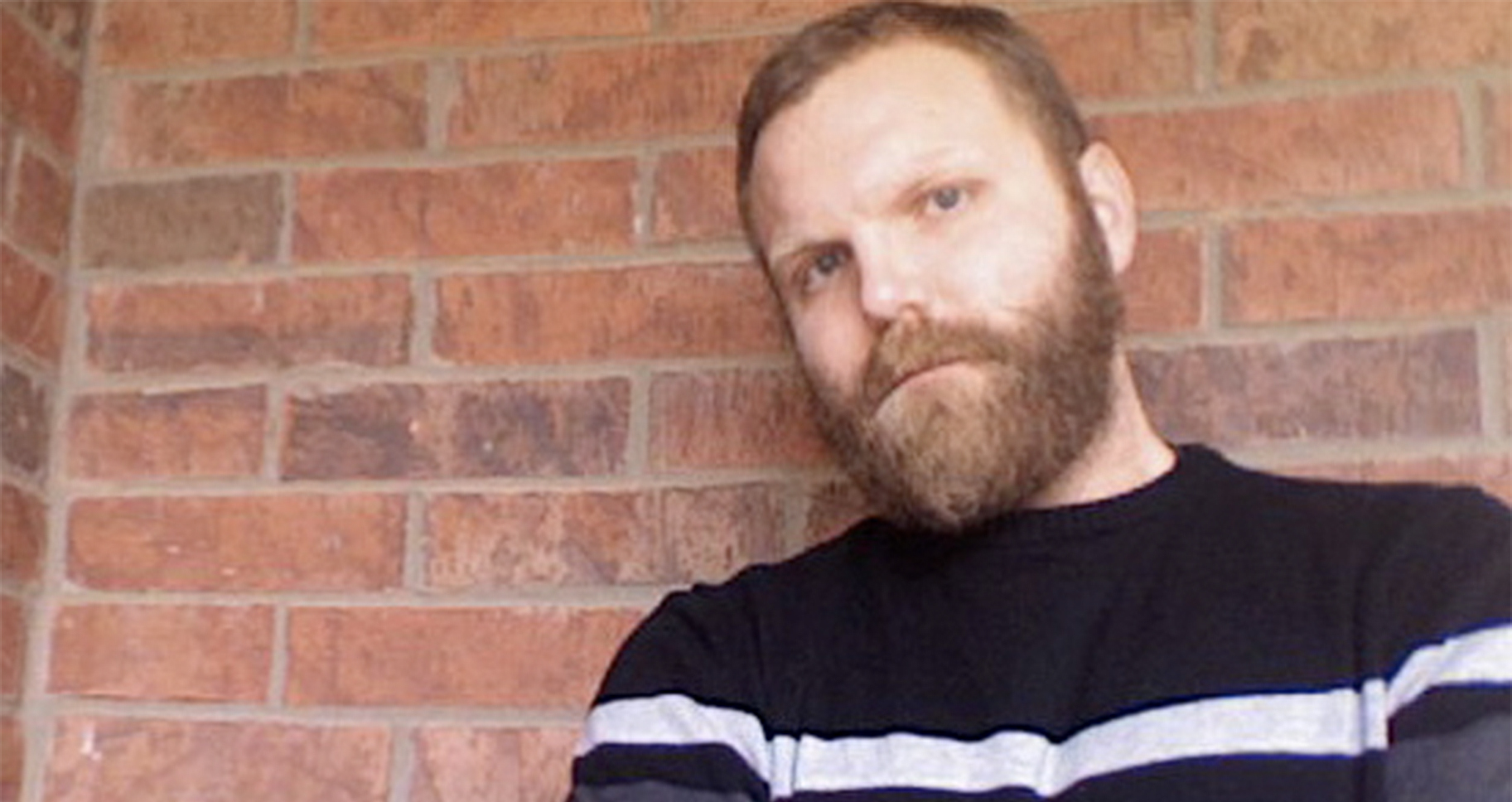
Oakland County recently released a comprehensive plan to address homelessness — and an OUWB associate professor played a critical role in its development.
The Oakland County Neighborhood and Housing Development (OCNHD) Division led the effort to create the county’s “Blueprint to End Homelessness.”
The plan is dedicated to eradicating homelessness in Oakland County through prevention, housing with wraparound services, reforming the system of care, and engaging the community.
Development of the plan included formation of a task force consisting of representatives from various community partners. One of those representatives was Jason Wasserman, Ph.D., associate professor, Department of Foundational Medical Studies.
“There are creative ways that we can approach homelessness that maybe aren’t often reflected in the social services sector but could be,” says Wasserman. “I’m passionate about finding these creative solutions.”
Shane Bies, manager of OCNHD, says Wasserman brought a tremendous amount to the process.
“Jason is known for bringing different thoughts and different ideas and pushing people outside of their comfort zones,” he says. “He very strategically was able to encourage people to think outside of the areas they’re normally used to thinking.
“It really helped make sure there was no stone unturned and that really brought some innovative thought processes to the conversation,” adds Bies.
‘One event…away from experiencing homelessness’
It’s estimated there are at least 3,000 people in Oakland County who are homeless, with countless others on the edge.
Further, one in four homeowners have excessive costs and more than 40 percent of renters pay more than 30 percent of their budget to housing costs, according to the county. A person working a minimum wage job would have to work 65 hours a week to afford rent in Oakland County.
“Most people understand that there are others who experience homelessness, but I think the scope and to what extent a larger group of people risk homelessness would surprise many,” says Bies.
“There are many households that are one event, or one very large bill, away from experiencing homelessness.”
County officials contend these are large issues that require the work of many towards a common goal, including policy makers, service providers, and the community.
“As a county blessed with many advantages, it is our responsibility to tackle our deepest and most troubling challenges and this blueprint will help us make progress in the critical area of homelessness,” Oakland County Executive Dave Coulter said in a press release.
Wasserman says homelessness in Oakland County has a big impact on the community.
There are the humanitarian aspects — people sleeping in streets, panhandling, and so on.
Then there are the costs that everyone pays.
“By not providing housing to individuals, they get sick, or they get injured, then they show up at the hospital,” he says. “They require so much more investment in terms of social services than a stable house would have cost in the first place…it’s cheaper to provide supported housing than it is to let people accrue all of the costly illnesses that happen when living out on the street.”
With the help of Michigan State Sen. Rosemary Bayer (D-Beverly Hills) and Rep. Brenda Carter (D-Pontiac), the county secured a $250,000 grant to develop a plan to address the issue in a more robust manner.
The Blueprint
To begin developing what would eventually become the “Blueprint to End Homelessness,” the county assembled a task force that consisted of representatives from, among others, OCNHD and Community Corrections, Alliance for Housing, HOPE Hospitality and Warming Center, Community Housing Network, Lighthouse, Haven, Samaritas, Street Democracy, city of Ferndale, and Centro Multicultural de la Familia.
Wasserman also was part of the task force, serving on its steering committee. He says he wanted to be involved because he felt the county is taking the kind of approach needed to address homelessness.
 |
| Wasserman |
“What’s obviously necessary is to have really innovative solutions that are comprehensive and well-coordinated among a variety of stakeholders in the community,” says Wasserman.
He says the focus needs to be on not just responding to homelessness, but preventing it — something he identifies as “an even more complex task.”
“I see the Blueprint as a real investment in trying to develop that vision,” he says.
Due to a delay caused by COVID-19, the task force had about six months to complete its work. Wasserman says there were many meetings because they wanted to employ a “very democratic process” that included representation from those who work directly and indirectly with the homeless population.
The group looked at the systemic causes that can lead to homelessness, including domestic violence, lack of access to transportation, health care and affordable housing. That allowed the task force to manage the identified issues and come up with the following recommendations:
- Establish a county-wide affordable housing trust fund.
- Work with municipalities on zoning laws that support the development of affordable housing.
- Identify funding sources, community acceptance, and locate an additional shelter in south Oakland County.
- Increase the number of shelter beds in existing shelters: on any given day in Oakland County, there are 3,000 people who are homeless and yet, there are only 254 emergency shelter beds available in Oakland County.
- Increase the number of hours of service in emergency shelters.
- Create a system that will track the availability of shelter space across the county.
- Provide case management to coordinate services and available resources across communities.
- Educational campaign to increase awareness of homelessness among community members and policy makers.
- Develop outreach to effectively distribute information about resources and services available to individuals and families who are at risk or experiencing homelessness.
Looking ahead
Implementing the recommendations will take a lot of work, say the parties involved.
Wasserman says he expects some people will be skeptical about the plan.
“My hope is that the skepticism doesn’t become toxic in a way that prevents people from engaging,” he says.
The Alliance for Housing, a nonprofit agency dedicated to ending homelessness, will be a key leader during the implementation phase. The Alliance coordinates housing, services and funding to support Oakland County citizens experiencing homelessness.
Concurrently, workgroups are in the process of being organized to address the goals in the Blueprint.
Those involved in getting to this point say it’s a huge step in the right direction.
Wasserman credited Bies and other county officials for “continually reminding everyone to reach for the sky.”
Bies says it couldn’t have happened without the various organizations stepping up, including Wasserman and OUWB.
“This is another great example of OUWB really being part of the community and focusing on community engagement,” he says. “A lot of medical schools and institutions might state (community engagement) in a mission and vision statement, but not really embody it — but OUWB really seems to.”
For more information, contact Andrew Dietderich, marketing writer, OUWB, at [email protected].
To request an interview, visit the OUWB Communications & Marketing webpage.
NOTICE: Except where otherwise noted, all articles are published under a Creative Commons Attribution 3.0 license. You are free to copy, distribute, adapt, transmit, or make commercial use of this work as long as you attribute Oakland University William Beaumont School of Medicine as the original creator and include a link to this article.

